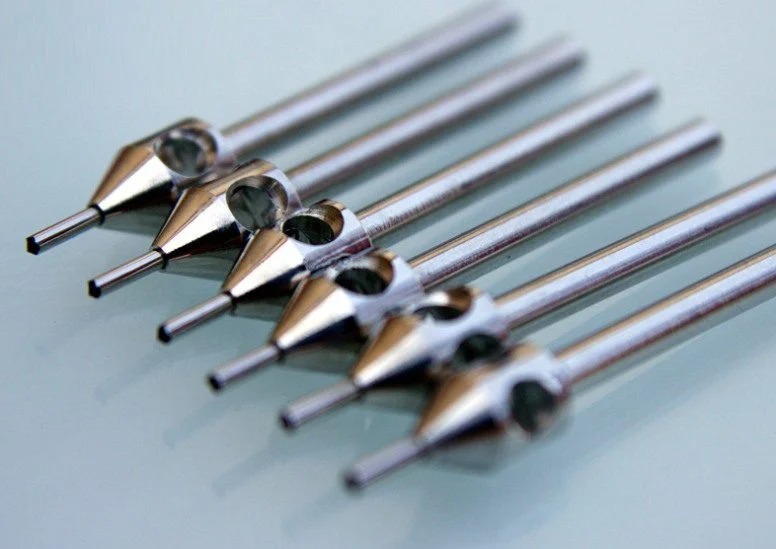Manual vs Motorized FUE: Which is the Best Hair Transplant Method?
For anyone considering a hair transplant, the debate between manual vs motorized FUE is unavoidable. You may also hear the term micromotor FUE, which falls under the motorized category.
Choosing the right hair transplant method is crucial for achieving natural results, preserving grafts, and minimizing trauma to the donor area.
In this guide, we’ll break down the differences, advantages, and drawbacks of both techniques, compare graft survival rates and transection rates, and explain how to determine the best FUE technique for your needs.
Read on to discover which method is best suited for your hair transplant goals..

What is Manual FUE? (The Manual Punch Technique)
In Manual FUE, or the manual punch technique, hair follicles are extracted one by one from the donor area using a handheld, cylindrical punch operated entirely by the surgeon.
The surgeon carefully positions the punch over each follicle at the correct angle, matching the natural direction of hair growth. With gentle, controlled rotations of the hand, the punch is advanced just deep enough to separate the follicular unit from the surrounding tissue.
The graft, containing one or more hair follicles, is then delicately removed using fine surgical forceps.
Unlike motorized systems, this manual extraction approach gives the surgeon complete tactile control throughout the process. This helps reduce the risk of transection (damage to the follicle) and ensures the highest possible graft survival rate.
Because each extraction is performed by hand, Manual FUE requires exceptional precision, concentration, and dexterity. Although more time-consuming, this method allows for greater surgical finesse and a customized approach for each patient.
Pros of Manual FUE
-
- High precision and control, especially in small or delicate areas.
-
- Lower transection rate, making it ideal for fragile follicles.
-
- Minimal trauma to surrounding tissue .
-
- Excellent for patients with curly or fine hair.
Cons of Manual FUE
-
- Slower procedure compared to motorized devices.
-
- Requires a highly skilled surgeon to achieve consistent results.
-
- May result in longer procedure sessions and increased surgeon fatigue.
-
- May require a multiple-day hair transplant session depending on the graft number.
What is Motorized FUE? (The Micromotor Technique)
Unlike the manual approach, where the punch is rotated by hand, Motorized FUE hair transplant, also known as the micromotor technique, uses a handheld motorized device to assist in follicle extraction.
In this method, the punch is attached to the tip of a small handheld motor, which performs controlled rotational or oscillatory movements to loosen the follicular unit from the surrounding tissue.
While FUE motors may resemble handheld drills used in other fields, they are specifically designed for surgical precision, offering smooth motion, adjustable speed, and depth control.
There are many types of handheld FUE motors. Some are simple systems that allow the surgeon to control only the speed and direction of rotation, while others are computer-assisted devices offering a wide range of customizable settings.
These advanced systems can fine-tune rotation speed, torque, oscillation angle, and punch depth, allowing surgeons to adapt to each patient’s skin type, hair angle, and follicle structure. Many of these devices can also accommodate different punch sizes and designs, enabling further customization for optimal hair transplant results.
Despite these technological differences, the basic principles remain the same. Once the follicular unit has been isolated using the motorized punch, each graft is carefully extracted with fine forceps, just as in the manual FUE technique. Proper graft handling during this stage is crucial to maintaining graft viability and ensuring a high survival rate during implantation.
Motorized FUE combines efficiency with precision, allowing surgeons to harvest larger graft numbers more quickly while maintaining accuracy. However, like all techniques, the outcome depends heavily on the surgeon’s expertise and ability to control the device’s speed, angle, and depth to minimize graft transection and tissue trauma.
When performed skillfully, it provides excellent graft survival rates and natural-looking results comparable to those achieved with the manual technique.
Pros of Motorized FUE
- Faster extraction, ideal for large sessions.
- Shorter procedure time compared to Manual FUE.
- Consistent speed reduces surgeon fatigue.
- Adjustable oscillation for different hair types.
Cons of Motorized FUE
- Slightly higher transection rate if not performed by an experienced surgeon.
- Trauma to the donor area due to speed, friction, and heat.
- Damage to hair follicles occurs if rotation speed is too high.
- Requires experience and high precision from the doctor.
Manual vs Motorized FUE: What is The Difference?
| Manual FUE | vs | Motorized FUE (Micromotor) |
| Suitable for small sessions | Number of Grafts | Suitable for large sessions |
| Very High | Precision & Control | High |
| Slow | Speed of Extraction | Fast, can be adjusted by surgeon |
| Higher | Graft Out of Body Time | Lower |
| Very Low | Risk of Trauma to Surrounding Tissue | Higher if speed is not controlled |
| High, decreases in larger sessions | Graft Survival Rate | Moderate to High, depends on surgeon skill |
| Low | Transection Rate | Slightly higher if doctor is inexperienced |
| High | Surgeon Fatigue | Low |
| More Expensive | Cost | Moderate |
| Similar | Recovery Time | Similar |
Manual vs Micromotor FUE: Which Technique Offers Better Graft Survival Rate?
Graft survival is one of the most critical metrics when comparing manual vs motorized FUE. Studies show that both methods have high success rates when performed by experienced surgeons.
- Manual FUE: Offers slightly higher graft survival in smaller sessions or delicate hair types due to precise control.
- Micromotor FUE: Excellent for large sessions. The out-of-body time, the duration grafts remain outside the scalp before implantation, tends to be shorter in micromotor FUE because of the faster extraction speed, which can positively influence survival rates when managed properly.
Manual vs Micromotor FUE: Which Method Has Lower A Transection Rate?
Transection occurs when hair follicles are damaged during extraction. Lower transection rates improve the chances of successful hair growth.
- Manual FUE: Typically results in lower transection rates due to precise, controlled movements.
- Motorized FUE: Can slightly increase transection risk if speed is prioritized over accuracy.
Tip: Always choose a surgeon with expertise in the specific FUE technique being used, whether it is manual or motorized.
How to Choose the Best FUE Technique for You
The choice between manual and motorized FUE depends on several factors:
- Hair characteristics (curly, fragile, or fine hair may benefit from manual FUE).
- Session size (large sessions often suit motorized FUE).
- Donor area density and goals.
- Surgeon expertise is the most important factor, regardless of technique.
Remember: The best FUE technique is the one tailored to your unique needs and executed by a qualified hair transplant surgeon.
Is Micromotor FUE the Same as Robotic FUE?
Many patients wonder if Micromotor or Motorized FUE and Robotic FUE are the same. While they share similarities, they are not identical:
- Micromotor FUE: A powered handheld device that assists the surgeon in follicle extraction. It still requires human control for precision.
- Robotic FUE: A fully automated or semi-automated system guided by software and AI. It can plan and execute extractions with minimal human intervention.
The Civas&Akpınar Approach to Follicular Unit Extraction (FUE)
At Civas&Akpınar Hair Transplant Turkey, one of the most crucial steps in our process is the Modified FOX Test. Performed before extraction, this test helps our doctors assess the ease of follicular unit removal from the donor area.
Using manual punches of varying diameters and shapes, they determine the ideal punch size and shape needed for that specific patient. The goal is to achieve precise, clean extractions with minimal transection and maximum graft integrity.
After this careful evaluation, our surgeons transition to motorized (micromotor) extraction, optimizing parameters such as speed, oscillation, depth, and angle to ensure a smooth and efficient harvesting process.
This hybrid approach allows for both the tactile precision of manual FUE and the efficiency of motorized FUE, resulting in consistently high-quality grafts and maintaining a graft survival rate of 95–98%.
Manual FUE vs Motorized FUE - Which is Better?
In the Manual vs Motorized FUE debate, there is no one-size-fits-all answer.
Both Manual and Motorized FUE techniques have proven to be safe and effective methods for follicular unit extraction, each with its own set of advantages. Manual FUE allows for exceptional control and tactile sensitivity, making it ideal for delicate areas or cases requiring meticulous precision. However, it is a slower and more labor-intensive technique.
Recent comparative studies have shown that Motorized FUE offers comparable graft survival and safety outcomes, while allowing surgeons to extract a higher number of grafts in less time and with greater consistency. This makes it a particularly practical option for larger sessions and for patients seeking a balance between efficiency, precision, and recovery time.
Ultimately, the best FUE technique depends on your surgeon’s expertise, your scalp characteristics, and hair transplant goals.
At Civas&Akpınar, our surgeons use both manual and motorized techniques, often in combination, to optimize every stage of the extraction process, ensuring high graft survival rates and natural-looking results tailored to each patient’s needs.
Book a consultation with our specialists to see what is the best FUE technique for you.
Frequently Asked Questions (FAQ) about Manual vs Motorized FUE
Which technique is better, Manual or Motorized FUE?
Both methods can yield excellent results when performed by an experienced surgeon. Manual FUE offers more tactile control, while motorized FUE provides greater speed and consistency for large sessions.
Is graft survival higher in manual or motorized FUE?
Manual FUE may have slightly lower transection rates in experienced hands, but modern motorized systems also achieve very high survival rates when used properly.
Can manual and motorized FUE be combined?
Yes, some surgeons use a hybrid approach to optimize precision in sensitive areas and speed in larger sections.
Does motorized FUE cause more graft damage than Manual FUE?
If not properly controlled, excessive speed or torque in motorized devices can increase graft trauma. However, skilled surgeons adjust the settings to prevent this.
Which method heals faster, Manual or Micromotor FUE?
Healing time is similar for both methods since the extraction punches are typically the same size. Postoperative care plays a larger role than the device used.
Which method is less painful than the other?
Both Manual and Motorized FUE are performed under local anesthesia, and patient comfort depends more on technique and anesthesia management than on whether the punch is manual or motorized.
Which technique takes longer?
Manual FUE is slower because each graft is extracted manually. Motorized FUE is faster and more efficient for high graft numbers.
Do both Manual and Micromotor FUE methods leave scars?
Both leave tiny circular scars (less than 1 mm), which are barely noticeable once healed, especially when performed by a skilled surgeon.
Which method gives more natural results, Manual or Motorized?
Naturalness depends on the implantation design and the surgeon’s artistry, not only on the extraction method. Both can achieve natural results when performed correctly.


